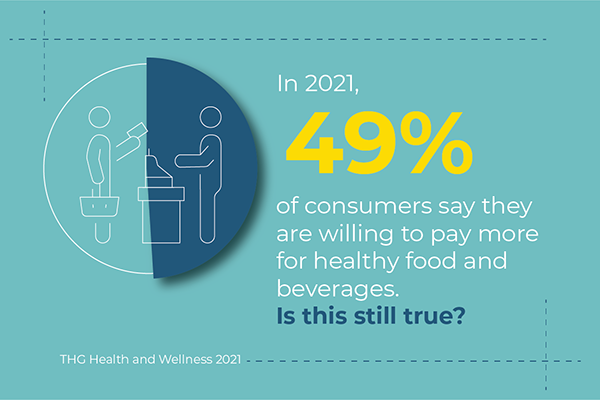Consumers, even those in lower-income households, have long told Hartman Group researchers that health and wellness priorities are important, if not sacred. So deeply ingrained is this consumer belief that they are often willing to pay more for products and services that help them achieve their health and wellness goals, including healthier food and beverages. Consumers’ rationale for this behavior has frequently been that their quality of life is “worth it,” or they would rather pay a little more now than pay a lot more later with significant health care costs.

That was then…this is now. Today consumers are facing unprecedented inflation. Our Food Sourcing in America 2022, found 35% of shoppers said the “price of items they want going up” was an obstacle to buying everything they need, and 21% (up 7 pts since 2020) reported “household budget limitations” as an obstacle. Qualitative research participants reported healthy foods and beverages are being sacrificed to stay within their food and beverage budgets. Changing how they shop and what they buy is especially true for consumers who make $35,000 or less, annually.
Can brands with products that contain health and wellness attributes remain confident that consumers’ aspirations and desires for quality experiences and a high quality of life will continue to fuel their growth? Or, will inflation take its toll requiring innovation to deliver contemporary wellness attributes with cost-savings, or value-added benefits, to justify current costs let alone price increases? Which attributes or benefits will be considered “worth it”? We hypothesize the tried and true might win over the novel and experimental in this economic climate. Don’t wonder. Prepare.
Health and Wellness 2023 will answer these questions, and more, so you can act with confidence.
